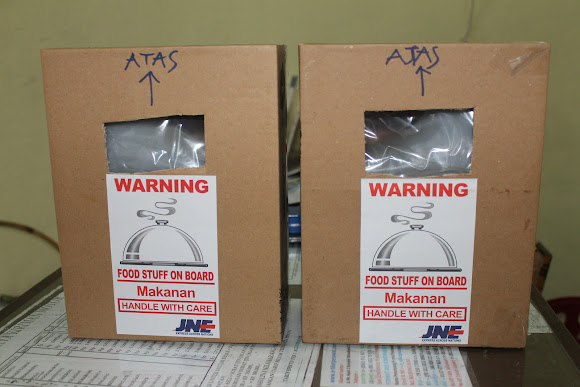I would like to apologize that today’s article is written in Bahasa Indonesia, intended mainly for Indonesian readers and bloggers. Since my blog is bilingual, English and Indonesian, sometimes write posts in Indonesian just as often as I do in English. For my international visitors, especially bloggers from English-speaking countries or other parts of the world, you can easily use Google Translate to help you understand the content of my blog posts written in Bahasa Indonesia.
This article is dedicated to, and in remembrance of, one of my best friends, Mas Eddy Setyawan, who passed away at UNTAN Hospital on Saturday, October 25th, 2025.
Kenangan Bersama Mas Eddy Setyawan. Sahabat yang Tak Akan Kulupa
By Asep Haryono
Ada beberapa orang dalam hidup kita yang hadir bukan sekadar untuk singgah, tapi untuk meninggalkan jejak yang dalam di hati. Bagi saya, salah satunya adalah Mas Eddy Setyawan seorang sahabat, rekan, dan pribadi hangat yang kini telah berpulang menghadap Allah SWT
Kami pertama kali berkenalan beberapa tahun lalu. Dari obrolan ringan di WhatsApp, hubungan kami berkembang menjadi pertemanan yang penuh canda, keakraban, dan saling menghargai. Percakapan kami sederhana, tapi selalu bermakna. Salah satu pesan awal dariku masih terasa hangat di ingatan:
“Assalamualaikum Wr Wb Mas Eddy Setyawan. Smoga masih ingat dirikuh hihihi
Dan ia membalas dengan gaya khasnya yang santai tapi ramah:
“Wa’alaikum salam. Ingat lah. Gimana Kang Guru?”
Sejak saat itu, obrolan kami terus berlanjut tentang rencana bertemu, tentang pekerjaan, bahkan tentang hal-hal kecil yang membuat hari terasa lebih ringan. Saya masih ingat ketika kami berencana bertemu di Kafe Kedai Kayu, sambil ngopi dan bersilaturahmi. Namun hari itu hujan turun, dan Mas Eddy dengan cepat mengusulkan,
“Ke rumah saya aja, Kang. JNE Paris 2 Pontianak. Saya tunggu secepatnya. Aku masih banyak kerjaan soalnya.”
Begitulah beliau selalu penuh perhatian, praktis, dan tetap ramah meski sedang sibuk. Dalam percakapan kami, saya bisa merasakan betapa tulusnya beliau. Tidak ada jarak, tidak ada basa-basi berlebihan hanya komunikasi yang jujur dari hati ke hati.
Kabar Duka
Kabar duka datang dari Mas Edi Suprianto dari Borneo istimewa yang mengabarkan Mas Eddy Setyawan telah wafat. Bagai dentuman keras menggelegar di telinga saya mendengarnya
Begitu tiba-tiba. Sosok sahabat, rekan, dan saudara yang begitu hangat, Mas Eddy Setyawan telah berpulang ke hadirat Allah SWT. Tidak ada kata yang cukup untuk menggambarkan rasa kehilangan yang begitu dalam. Obrolan WA saya yang terakhir tertanggal 15 Oktober 2025 menjadi obrolan WA saya yang terakhir bersama Almarhum
Beliau dikenal sebagai pribadi yang rendah hati, penuh semangat, dan selalu menebarkan kebaikan kepada siapa pun di sekitarnya. Dalam setiap percakapan, dalam setiap tawa, dan dalam setiap bantuan kecil yang beliau berikan, tersimpan nilai ketulusan yang begitu besar.
Kadang, obrolan kami juga diwarnai tawa dan candaan ringan. Tentang SIM dan STNK yang mati, tentang hujan yang turun di tengah perjalanan, bahkan tentang hal-hal kecil yang kini terasa begitu berharga. Kini, setiap kali saya membaca kembali percakapan kami, ada rasa haru yang sulit dijelaskan.
Kehilangan ini bukan hanya milik saya, tetapi juga bagi semua orang yang pernah bersinggungan dengan kebaikan almarhum. Semoga segala amal ibadah beliau diterima di sisi Allah SWT, diampuni segala kesalahannya, dan diberikan tempat terbaik di surga-Nya.
Mas Eddy bukan hanya seorang sahabat. Ia adalah seseorang yang selalu siap membantu, tanpa banyak bicara, tanpa pamrih. Dalam dunia yang serba cepat ini, kehadiran orang seperti beliau adalah anugerah.
Kini, setelah beliau tiada, kenangan itu menjadi bagian dari perjalanan hidup saya kenangan yang tidak akan pernah pudar.
“Matur suwun, Mas Eddy,” tulisku dulu dengan ringan. Tapi sekarang, kalimat itu terasa jauh lebih dalam. Terima kasih atas setiap percakapan, setiap tawa, dan setiap waktu yang kita bagi.
"Inna lillahi wa inna ilaihi raji’un.
Semoga Allah SWT memberikan kekuatan dan ketabahan kepada keluarga yang ditinggalkan, serta melapangkan jalan bagi almarhum menuju tempat yang penuh cahaya dan kedamaian."
Amin ya Rabbal ‘alamin.
Selamat jalan, sahabatku Mas Eddy Setyawan
Kami akan selalu menyertaimu dalam doa
Semoga Allah SWT menempatkanmu di tempat terbaik di sisi-Nya.Amin.
اللَّهُمَّ اغْفِرْ لَهُ وَارْحَمْهُ وَعَافِهِ وَاعْفُ عَنْهُ
“Ya Allah, ampunilah dia, rahmatilah dia, selamatkanlah dia, dan maafkanlah segala kesalahannya.”
Asep Haryono
Komplek Duta Bandara
Ayani 2 Supadio, Kubu Raya
A Message From Asep Haryono
"Thank you so much for your time here. I really appreciate your precious moment here as well. Please leave any comment down below. Let me hear from you. Greetings from Indonesia"

























